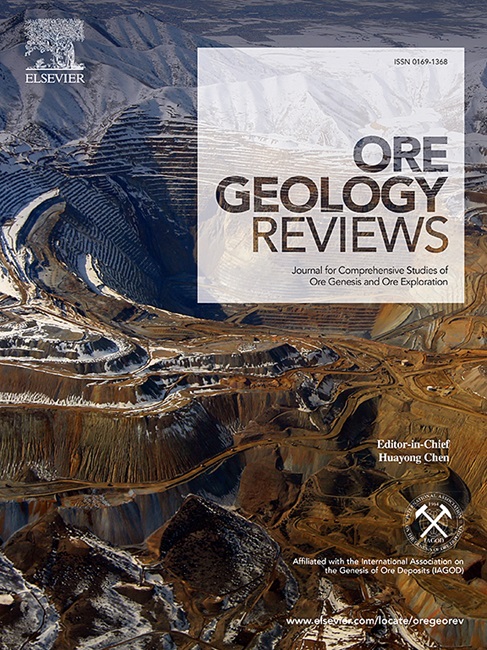Simulation-based mineral prospectivity modeling and Gray Wolf optimization algorithm for delimiting exploration targets
IF 3.2
2区 地球科学
Q1 GEOLOGY
引用次数: 0
Abstract
Exploration targeting is a multi-step process concerned with delimiting progressively smaller areas that are prospective for the targeted mineral deposit type, capable of hosting a potentially economic deposit and deserving of exploration funds. In mineral prospectivity modeling (MPM), target delineation represents the final stage of a procedure designed to identify discrete, explorable areas of high discovery potential within a much larger area of interest, typically covering entire camps, districts or provinces. However, defining unbiased thresholds for discriminating between high, moderate and low priority exploration targets is not a straightforward task. To avoid human bias in this thresholding process, a more structured, automated approach is needed. This study presents a simulation-based approach to MPM that adapts the Grey Wolf Optimizer (GWO) algorithm, a swarm intelligence method capable of objectively delineating exploration targets from MPM results. Our approach aims to reduce bias by applying Monte Carlo Simulation to the assignment of robust weights to the predictor maps at the core of the MPM procedure. The GWO algorithm facilitates the classification and prioritization and enhances the accuracy and reliability of the resulting targets. The proposed procedure is demonstrated here using a porphyry copper (Cu) example from the Chahargonbad district, SE Iran. The results show that the GWO-based framework not only identifies high-priority exploration zones but also reduces the uncertainty inherent in traditional manual selection methods. As such, this novel approach contributes to both theoretical and practical advancements in the field of mineral exploration, offering a scalable solution that can be adapted to various geological settings.

求助全文
约1分钟内获得全文
求助全文
来源期刊

Ore Geology Reviews
地学-地质学
CiteScore
6.50
自引率
27.30%
发文量
546
审稿时长
22.9 weeks
期刊介绍:
Ore Geology Reviews aims to familiarize all earth scientists with recent advances in a number of interconnected disciplines related to the study of, and search for, ore deposits. The reviews range from brief to longer contributions, but the journal preferentially publishes manuscripts that fill the niche between the commonly shorter journal articles and the comprehensive book coverages, and thus has a special appeal to many authors and readers.
 求助内容:
求助内容: 应助结果提醒方式:
应助结果提醒方式:


